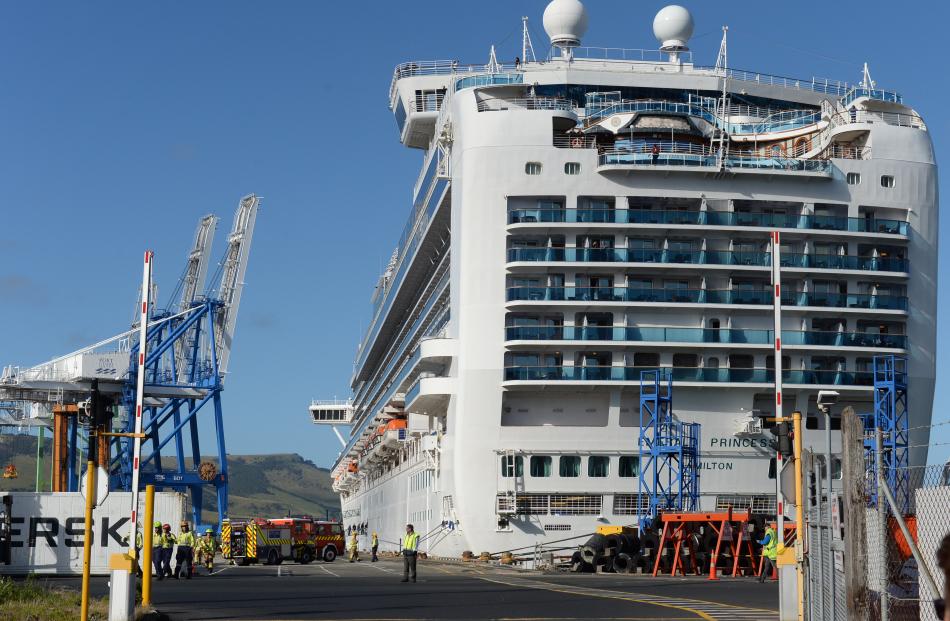
A Filipino engine room fitter died when a cylinder exploded on board the Emerald Princess, which was berthed in Dunedin's Port Chalmers, on February 9.
An expert metallurgist says the catastrophic failure occurred as a result of overload caused by corrosion thinning.
Today the New Zealand Transport Accident Investigation Commission released an interim report into the tragedy making a number of recommendations to address safety issues they considered put crew and passengers' lives at risk wherever nitrogen cylinders were stored in a harsh marine environment.
The report said crew were re-pressurising a stored energy system used to raise and lower lifeboats after the pressure of the nitrogen system for one lifeboat had dropped.
The entire manifold unit was replaced as crew believed it was highly unlikely the pressurised cylinders were at fault. During the final stage of the re-pressurising operation one of the four nitrogen cylinders burst - killing the fitter standing close by.
Tests showed the exploded cylinder had developed corrosion on the outside of the cylinder reducing the thickness of its wall by about 75 percent at the point where it burst.
Two other areas of corrosion were found on the same defective cylinder.
The metallurgist's initial assessment was the failure had occurred as a result of overload caused by corrosion thinning.
He also found a number of other cylinders on board the ship appeared to have similar corrosion-related damage. Significant corrosion damage was also observed on the pressurised vessel connecting the nitrogen cylinders and the stored energy system.
The nitrogen cylinder that exploded had been checked two weeks prior to the accident by an authorised representative and found to be in satisfactory working condition.
The commission was concerned there might be other pressure vessels part of the same system or similar systems that could pose a significant danger to seafarers and passengers.
As a result recommendations were issued last month to all Flag States, the International Association of Classification Societies, the manufacturer of the lifeboat alternative launching system, the Cruise Lines International Association and Maritime New Zealand warning about the danger of corrosion thinning in nitrogen cylinders stored in harsh environments.
The cylinder's manufacturers, Navalimpianti Tecnimpianti Groups, said it was now promptly contacting all customers with the same or similar equipment on board and the company's service networks were following up to support customers over inspections.
Any nitrogen cylinder deemed unfit due to corrosion would be required to be removed for further assessment.
The commission had recommended to the International Association of Classification Societies that it tell its members about the circumstances of the deadly accident and advise them to alert their surveyors to pay special attention to any corroded nitrogen cylinders or other pressure vessels when conducting their Class or Flag State surveys, particularly when inspecting pressure vessels stored in an open marine environment.
The Cruise Line International Association, which represents 95 percent of the industry, said it would address the recommendation with its membership when the final version of the report was published.
Maritime NZ has issued a safety bulletin about the potential serious risk to safety on board a vessel where nitrogen cylinders are used to as a stored kinetic energy system for launching lifeboats.











